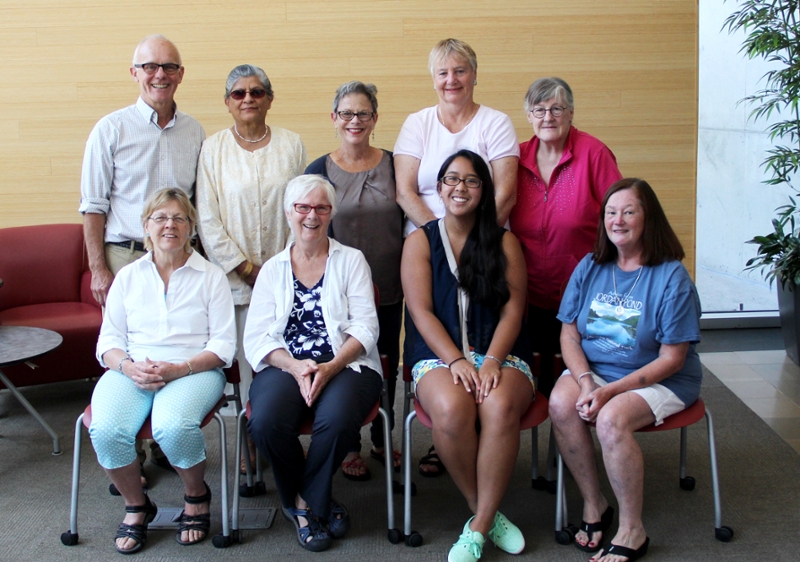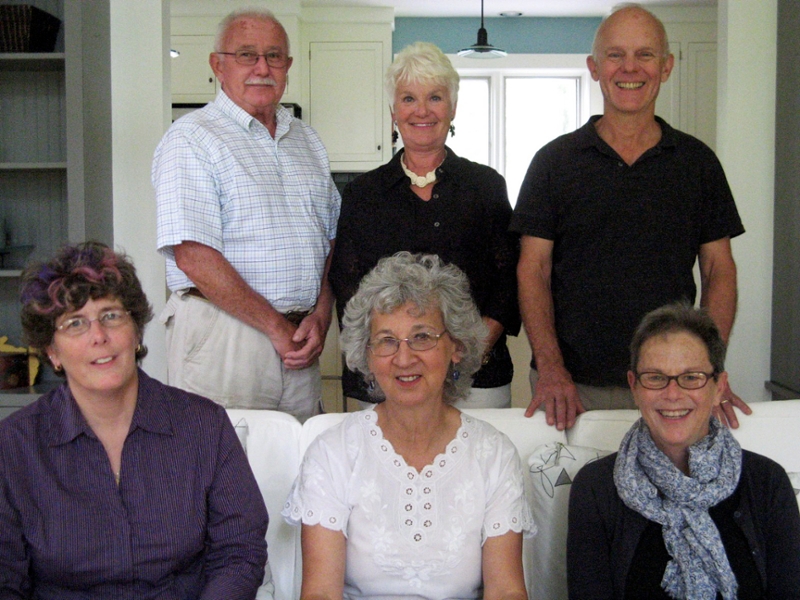By: Bethany Romano
Professor Walter Leutz, PhD’81 spent the 2015 calendar year on sabbatical conducting a community-based participatory action research (CBPAR) project focused on healthy aging in Waltham and Greenfield, Mass. CBPAR is a partnership approach to research between community members and researchers in which both parties contribute to the conceptualization, execution, and dissemination of a research study. Leutz recruited, trained, and led 13 older adult co-researchers who volunteered their time to help conduct a qualitative study of five characteristics related to healthy aging: physical infrastructure, services, social participation/civic engagement, safety and healthy behaviors. The study’s results show that both towns exhibit elements of age-friendliness across all five categories, but that more work can be done to promote healthy aging in these communities.
Leutz spoke with Heller Communications about this unique study, the findings, and implications for the future of healthy aging policies and programs in these towns.

Walter Leutz (top left) and his team of Waltham co-researchers
Heller Communications: You co-led this research half time on sabbatical. Aside from a small contribution from the Heller School to provide thank-you gifts to focus group participants, you did not receive funding for this study. This must have been a true labor of love for you and your co-researchers. Can you talk about the process for this study?
Walter Leutz: Yes, this really was a labor of love. My team was all volunteers, including my wife Betsy who was lead co-researcher in both towns, eight co-researchers in Waltham and four co-researchers in Greenfield. We also had support from an undergraduate intern, Ariana Sjamsu, who had a stipend from the Stephan Kaye Fellowship. With the exception of professor emerita Sarita Bhalotra and myself, no one in our group is a professional researcher. We recruited the volunteers, trained them, and they went off and did interviews and ran focus groups, took notes, helped analyze data, and reported findings. We relied on people who live here and know about these places, to open doors, refine our protocol and help interpret the findings. We ended up doing 30 interviews of town and private agency professionals working with seniors, as well as 16 focus groups of seniors.
I don’t know if anyone’s ever taken the CBPAR this far, particularly with older people. A typical CBPAR study includes funding and a full research team who recruits and community advisors to provide input and conduct outreach, but the research is still run and controlled by the professional researchers. In this study every aspect was highly reliant on volunteer community members. They achieved everything I could have imagined and more in terms of the quantity of work we did and quality of data we collected.
BR: The overall findings suggest that the environment for healthy aging in each town is pretty good, but could be better. What things should these towns do first to make improvements?
WL: I think there’s some low-hanging fruit – like lengthening the crossing times at some traffic lights and putting in benches downtown at bus stops. Many seniors need a place to sit down and rest. There are also some bigger items that could be addressed. The senior center in Greenfield, for example, needs to be replaced—it’s old and inadequate. There’s a hearing tonight to fund the creation of a new senior center, and our data will be presented there to help push for that. (Editor’s note: since the interview we learned that the new center passed unanimously.)
If you look at the housing being built in downtown Waltham—that could be senior housing. Older people, like anyone else, want to live where interesting things are going on—good restaurants and culture and so forth.
We want the governance in these towns to recognize that seniors are a growing part of the population, and some of them have money to spend. Unfortunately a lot of seniors are stuck with homes that they can no longer maintain, and many would likely get out if they saw a good alternative. If we had those good alternatives, people would move to those places.
One thing we heard often is the importance of neighborliness. Old people are reliant on the federal and state safety nets for income and health care. There are ways that it could be improved, either through formal programs—better transportation options, better coordination of homecare with medical care, etc. But there’s a lot that neighbors can do just by being nice friendly people. If there’s a winter storm and two days later your older-adult neighbor still hasn’t shoveled her driveway, do you go over there to see how she’s doing, to see if she needs food? We heard a lot of stories of people supporting each other, but there could be more, and it could be organized.
BR: Were there any big surprises for you in conducting this study?
WL: The TRIAD officer was a complete surprise to me. I have worked in this field for 30 years and I’d never heard of the TRIAD program. A TRIAD officer is a cop who connects emergency services with the local senior center and seniors. The senior center might ask the officer to go visit an at-risk elderly person and check on their smoke alarms. TRIAD officers also go around and warn elderly people about scams, which often target older people. The Waltham TRIAD officer, when I asked him what the greatest need for older people was, said “social transportation.” He knew that isolation is a big risk for older folks. In Greenfield the TRIAD officers also collect excess food from the farmers market and farm stands and deliver it to older people. It’s a great resource I’d never heard of before.

Walter Leutz (top right) and his team of Greenfield co-researchers
BR: Many of the programs you describe that augment the safety net to serve the elderly are community- and volunteer-based. It sounds like a really entrepreneurial space, in a way.
WL: Absolutely, very entrepreneurial. Greenfield, for example, has given new meaning to its “poor farm” land. Based on the English system, “poor farms” or “poor houses” were the old social welfare model in New England. Until the Great Depression, each municipality was responsible for its poor, and each had its own poor house or farm. If you were impoverished and had no alternatives, you’d go to the public authorities and you’d live on the poor farm or the poor house and you’d work there in exchange for very basic room and board.
The Greenfield poor farm closed in 1948 and was just sitting there, empty land that the town owned. About 10 years ago, a local group re-opened the farm to grow organic healthy food and give it away to people in need. Greenfield seniors were active in re-starting the farm and in its operation today.
BR: So what’s next for your group of co-researchers?
Now we have the results from all of these conversations, now we’re in the action stage of the CBPAR process. We’re trying to get our reports and papers out everywhere we can. We’re holding presentations, and seeing if we can get some interest. Some of the agencies on our advisory board are very interested. We’re going to share our findings on each town’s website and in each town’s senior center, and in other places like Jewish Family and Children’s Services in Waltham. The hope is that if we get enough interest and support we can work with town and private agencies to make some changes.
We’re planning to continue this work, and we hope to grow. We have our team and advisory board, and we are trying to add more senior volunteers, so we might become a more organized group. Doing two towns was a lot, but it seems to have worked. We collected good data using volunteer researchers. A lot of the things that could be improved are the same in both towns, despite how different these towns are.
There’s more we can do. Our focus groups didn’t get too much into the immigrant communities or other non-English speaking communities in these towns. For example, there’s an important Ugandan community here in Waltham, and we weren’t able to organize a focus group there. Also we heard mostly from able-bodied people who could get out and who weren’t socially isolated, weren’t disabled. If we extend the study we want to do more to access a broader range of older people in these towns, to find out what they need and where these towns can make improvements to promote healthy aging for everyone.
